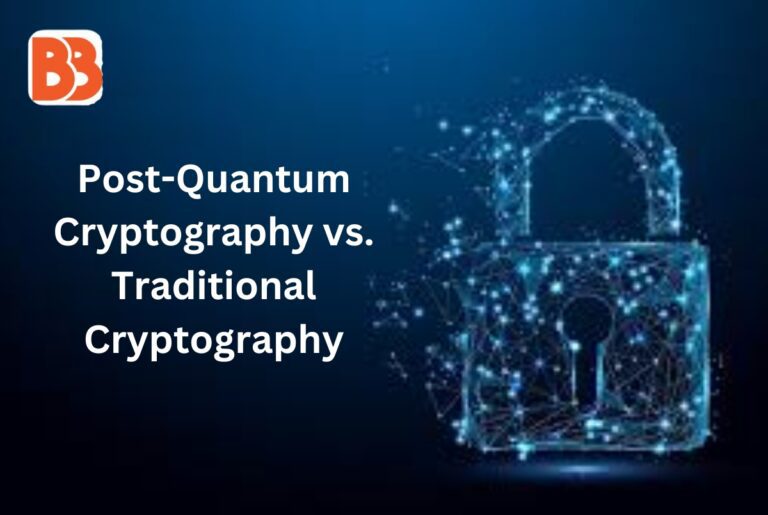The emergence of Post-Quantum Cryptography vs. Traditional Cryptography poses a significant threat to these systems. To address this, the field of post-quantum cryptography (PQC) has emerged, developing algorithms designed to resist quantum-powered attacks. Understanding the differences between traditional cryptography and PQC is essential for grasping the stakes of this transition. Let’s dive into this article to explore the Post-Quantum Cryptography vs. Traditional Cryptography these two approaches to encryption and explains why PQC is critical for safeguarding the future of digital security.
Traditional Cryptography: A Time-Tested Framework
Traditional cryptography secures digital information through algorithms that leverage computational complexity. It is generally categorized into two types:
Symmetric-Key Cryptography
Involves a single shared key for encryption and decryption. Examples include:
- AES (Advanced Encryption Standard): Widely used for securing sensitive data.
- DES (Data Encryption Standard): An older encryption standard, now largely obsolete due to advances in computing power.
Public-Key Cryptography (Asymmetric Cryptography)
Uses a pair of keys—a public key for encryption and a private key for decryption. Examples include:
- RSA (Rivest-Shamir-Adleman): Based on the difficulty of factoring large integers.
- Elliptic Curve Cryptography (ECC): Relies on the complexity of solving elliptic curve discrete logarithms.
- Diffie-Hellman Key Exchange: Allows secure exchange of cryptographic keys over a public channel.
These algorithms are secure against classical computers because solving the underlying mathematical problems would take an impractical amount of time and computational resources.
The Quantum Computing Threat
Quantum computers operate on fundamentally different principles than classical computers. Using quantum bits (qubits), quantum systems can process multiple possibilities simultaneously through quantum phenomena like superposition and entanglement. This capability allows quantum computers to solve certain problems exponentially faster than classical computers.
For cryptography, this poses a major issue:
- Shor’s Algorithm: A quantum algorithm that can efficiently factor large integers and solve discrete logarithms. This capability can break RSA, ECC, and Diffie-Hellman encryption.
- Grover’s Algorithm: Allows quantum computers to search unsorted databases faster, effectively halving the key strength of symmetric algorithms like AES.
As quantum computing advances, the encryption methods securing the modern digital ecosystem are at risk of becoming obsolete.
Post-Quantum Cryptography: The Next Frontier
Post-Quantum Cryptography is designed to resist attacks from both classical and quantum computers. Unlike traditional cryptography, which relies on problems vulnerable to quantum algorithms, PQC uses mathematical challenges that are believed to be quantum-resistant. Key PQC techniques include:
- Lattice-Based Cryptography: Relies on the complexity of lattice problems, such as the Shortest Vector Problem (SVP), which are hard for both classical and quantum computers.
- Hash-Based Cryptography: Uses cryptographic hash functions to create secure signatures.
- Code-Based Cryptography: Based on the difficulty of decoding error-correcting codes without additional information.
- Multivariate Polynomial Cryptography: Involves solving systems of multivariate polynomial equations, a task believed to be infeasible for quantum computers.
- Isogeny-Based Cryptography: Uses the difficulty of computing isogenies (special maps) between elliptic curves.
These algorithms are being rigorously evaluated as part of the National Institute of Standards and Technology (NIST) initiative to develop standardized quantum-resistant cryptographic methods.
Key Differences Between Traditional and Post-Quantum Cryptography
Security Foundation
- Traditional Cryptography: Depends on the computational infeasibility of solving certain mathematical problems using classical computers.
- Post-Quantum Cryptography: Designed to withstand attacks from quantum computers, relying on mathematical problems not easily solvable even with quantum resources.
Vulnerability to Quantum Attacks
- Traditional Cryptography: Vulnerable to quantum algorithms like Shor’s, which can efficiently break RSA and ECC.
- Post-Quantum Cryptography: Resistant to quantum attacks by design, addressing vulnerabilities inherent in traditional methods.
Key Sizes and Performance
- Traditional Cryptography: Uses relatively compact keys, especially in public-key systems like ECC.
- Post-Quantum Cryptography: Often requires significantly larger key sizes and ciphertexts, leading to increased computational and storage demands.
For example:
- An RSA key typically ranges from 2048 to 4096 bits.
- Some lattice-based cryptography schemes require keys exceeding 1 MB.
Implementation Challenges
- Traditional Cryptography: Mature and widely adopted, with robust hardware and software implementations optimized over decades.
- Post-Quantum Cryptography: Still under development, with ongoing challenges in optimizing performance, ensuring compatibility with existing systems, and deploying at scale.
Adoption Timeline
- Traditional Cryptography: Ubiquitous, underpinning most secure communications, financial transactions, and digital authentication systems today.
- Post-Quantum Cryptography: Emerging, with standards still being finalized. Widespread adoption will require significant investment and planning.
Why Post-Quantum Cryptography Matters
Future-Proofing Security
PQC is essential for protecting data that needs to remain secure for decades, such as medical records, government secrets, and long-term financial information. Without PQC, encrypted data intercepted today could be decrypted in the future once quantum computers become powerful enough.
Regulatory Compliance
Governments and regulatory bodies are beginning to recognize the quantum threat. Organizations will need to transition to PQC to comply with future regulations mandating quantum-safe encryption, particularly in industries like finance, healthcare, and defense.
Economic and National Security
Quantum-resilient cryptography is critical for maintaining trust in digital systems. A breach of current cryptographic systems by quantum technology could disrupt economies, compromise national security, and erode public confidence in digital infrastructure.
Enabling Seamless Transition
Preparing for PQC now allows organizations to adopt hybrid cryptographic solutions, combining traditional and quantum-resistant algorithms. This phased approach ensures continuity of operations while laying the groundwork for full PQC adoption.
Conclusion
The transition from Post-Quantum Cryptography vs. Traditional Cryptography marks a new chapter in the evolution of digital security. While traditional cryptography has served as a reliable foundation for decades, the advent of quantum computing necessitates a shift to quantum-resistant methods. Understanding the key differences between these approaches is essential for safeguarding data privacy and maintaining trust in a rapidly changing technological landscape.The quantum era is coming, and post-quantum cryptography offers a way to embrace this future without compromising the security of our digital world.
Read More:
The Deep Web vs. Dark Web: Clarifying the Differences
